गुरु ब्रह्मा, गुरु विष्णु, गुरु देवो महेश्वरा; गुरु साक्षात परम ब्रह्मा, तस्मै श्री गुरवे नमः।'
Meaning:
The guru is Brahma, the guru is Vishnu, the guru is Maheshwara (Shiva); the guru is verily the supreme Brahman itself, salutations to that revered guru.
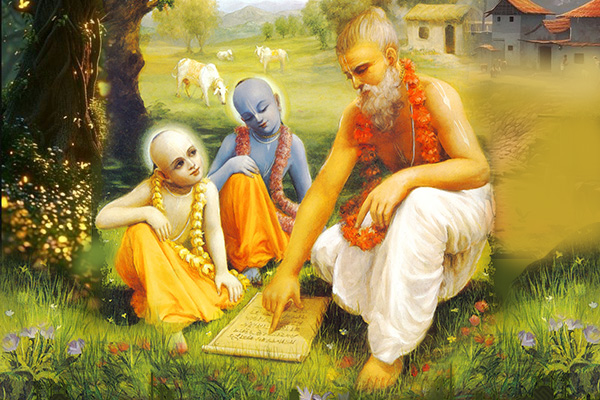
What is Guru Purnima? Guru Purnima Meaning
Celebrated on the full moon day of the Ashadha month (June-July), Guru Purnima is a highly significant day in Hinduism. It's a time to express deep respect and gratitude to Gurus, who act as guiding lights and knowledge-givers. The word 'Guru' itself translates to 'dispeller of darkness,' which highlights the role they play in removing ignorance and illuminating the path towards enlightenment. Traditionally, the day honours the revered sage Vyasa, credited with compiling and editing many foundational Hindu texts like the Mahabharata and the Vedas.
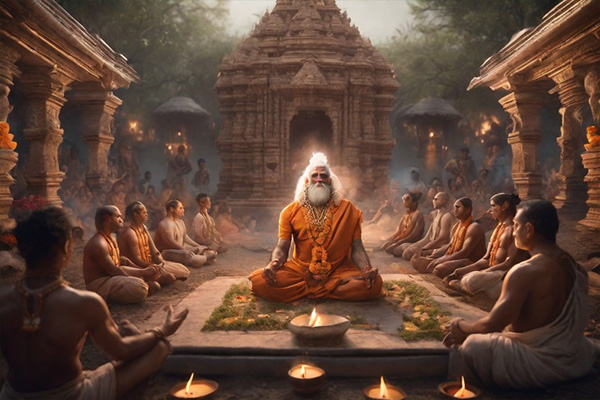
This rich tradition of Guru-Shishya (teacher-disciple) is celebrated, where students acknowledge the immense debt that they owe to their Gurus for their knowledge and spiritual growth. It's a day for offerings, prayers, and acts of service to Gurus, seeking their continued blessings and guidance on the lifelong journey of learning and self-discovery.
Guru Purnima 2026: Date, Time & Tithi
Guru Purnima on Wednesday, July 29, 2026
Purnima Tithi Begins - 06:18 PM on Jul 28, 2026
Purnima Tithi Ends - 08:05 PM on Jul 29, 2026
Why do we Celebrate Guru Purnima? Significance of Guru Purnima (Importance)
.jpg)
Guru Purnima, a cherished tradition, stems from various stories found in different spiritual teachings. According to one belief,
Lord Shiva
shared his wisdom with people on this day, making him the first teacher. Another tale tells of Ved Vyasa's birth, who on Guru Purnima, shared the teachings of the Vedas with his four students. In Buddhism, it's said that Buddha gave his first sermon to his followers in Sarnath on this day. Similarly, Jains celebrate Guru Purnima as the day Mahavira, a revered figure, gained his first follower.
The essence of Guru Purnima lies in honoring teachers who guide individuals from ignorance to understanding, highlighting the importance of knowledge and wisdom in spiritual growth. It reminds us of the power of learning and encourages the sharing of knowledge as a means of growth.
The significance of Guru Purnima (importance) extends beyond a religious or spiritual event. It has become a cultural celebration that transcends social and religious boundaries. On this day, we witness a beautiful display of collective appreciation where individuals from all around unite in order to honor their teachers and mentors.
It serves as a powerful reminder of the transformative impact that teachers, in their various roles, have on our lives. Guru Purnima is a day dedicated to acknowledging the fundamental role educators play in shaping not only individuals but society. Whether it's through temple visits, seeking blessings at ashrams, or simply expressing heartfelt gratitude, Guru Purnima supports a collective recognition of the debt we owe to those who illuminate our minds and our passions. This celebration highlights the importance of Guru Purnima as a time to honor and express gratitude towards our teachers, mentors, and guides, who selflessly impart knowledge and wisdom, shaping our paths and destinies.
In essence, this celebration becomes a powerful communal expression of appreciation. It strengthens the bonds of respect and gratitude that connect us across generations which ensures the continued transmission of knowledge and wisdom.
Why is Guru Purnima also known as Vyasa Purnima?

This day is also known as Vyasa Purnima and commemorated as the birth anniversary of Veda Vyasa, the author and a character in the Vedic magnum opus Mahabharata. Some of the notable Gurus in Hinduism are Sri Madhvacharya, Adi Shankara and Sri Ramanuja Acharya. Buddhists also celebrate Guru Purnima in honour of Gautama Buddha. It is said that Buddha gave his first sermon at Sarnath in Uttar Pradesh on this day.
Your real Guru is truly within. He is the One who dispels all fear and ignorance. As Ramakrishna Paramahamsa says, He alone is the true teacher who is illumined by the light of true knowledge.
Your Guru helps you connect to the Guru within. He resides in your Vishudha Chakra located on the throat and awakens when you surrender to your higher self.
Guru Purnima Vrat Katha, Puja Vidhi & Mantra
Story of Guru (Vyasa) Purnima | Guru Purnima Vrat Katha
Veda Vyasa Muni, the compiler of the Mahabharata, was born to Sage Parashara, the author of the Vishnu Purana (the first Purana), and Satyavati, on an island called Kalpi in the Yamuna River, as mentioned in the Vishnu Purana. It is said that Lord Vishnu desired the knowledge of the Vedas to be transformed into script form since, until then, this vast knowledge was only available orally. Thus, Veda Vyasa is regarded as an extension of Lord Vishnu, born to classify the Vedas and work on other ancient Hindu texts.
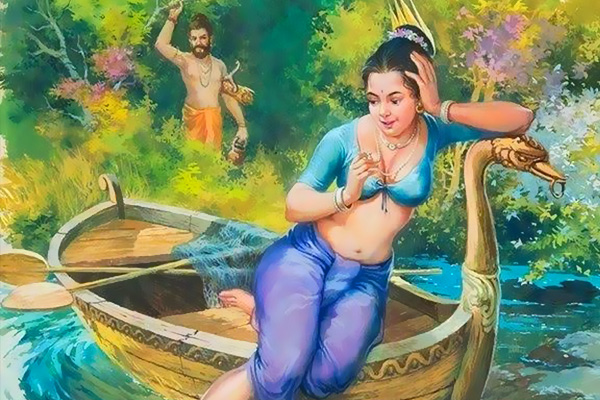
Vyasa's father, Sage Parashara, was the grandson of Sage Vashishtha. Pleased with Sage Parashara's penance, Lord Shiva granted him a boon that his son would be revered and well-known for his knowledge, and that his son would be a Brahmarishi equivalent to Sage Vashishtha.
Legend has it that Veda Vyasa's mother, Satyavati, conceived him and instantly gave birth to Vyasa. Veda Vyasa Muni was also known as Dwaipayana, meaning 'island-born', and due to his dark complexion, he was also named Krishna. As he grew up, Vyasa left home to tutor and gain knowledge under Lord Brahma, Narad Muni, and the four Kumaras. It is said that Veda Vyasa Muni spent his life in the current Indian state of Uttarakhand on the banks of the Ganga, where Sage Vashistha had also resided with the Pandava brothers.
Legend further states that Vyasa was a devotee of Lord Vishnu in one of his past lives when he was born as Sage Apantaratamas. The knowledge of the Upanishads, Vedas, and Dharmashahtras was inherent in Sage Apantaratamas, who was born as Veda Vyasa as per Lord Vishnu's desire.
Guru Purnima Puja Vidhi
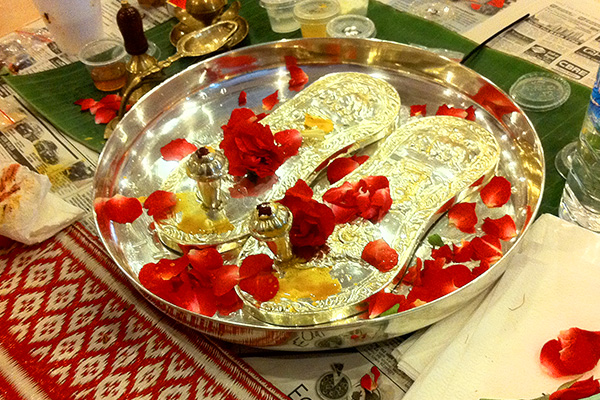
Follow these steps to observe the vrat with devotion and reverence:
- Begin the day with a bath and wear clean clothes.
- Set up a clean altar or sacred space for the vrat.
- Place a picture or idol of your guru on the altar.
- Light a lamp and incense.
- Offer flowers, fruits, sweets, and other auspicious items to the guru.
- Recite the Guru Mantra (mentioned below) with devotion.
- Perform aarti (circumambulation with a lit lamp) while singing hymns or bhajans in praise of the guru.
- Conclude the vrat with prayers for blessings, guidance, and wisdom from the guru.
- Distribute prasad (sanctified food) to family members and devotees.
Guru Purnima Mantra and It’s Meaning:
'ॐ गुरुभ्यो नमः'
(Om Gurubhyo Namah)
'ॐ' (Om): The primordial sound representing the universe and divine energy.
'गुरुभ्यो' (Gurubhyo): To the gurus.
'नमः' (Namah): Salutations or reverence.
'I bow down to the gurus.' This mantra is an expression of respect and reverence towards the lineage of gurus and the guru principle itself. Chanting this mantra invokes the blessings and guidance of all the spiritual masters.
Observing this vrat with sincerity and devotion is believed to bestow spiritual upliftment, knowledge, and blessings from the guru.
Works Of Vyas Muni
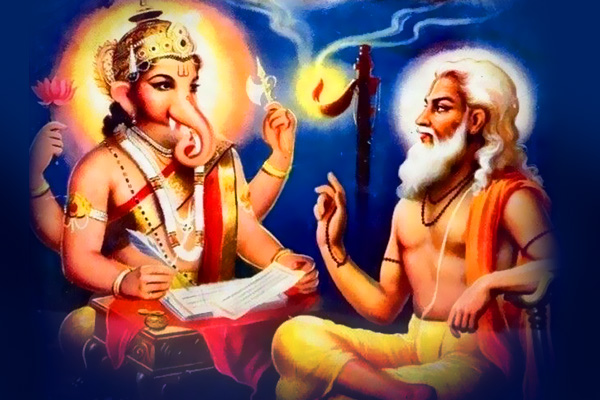
The great sage Veda Vyasa is credited to be the author of a wide range of ancient Hindu texts, which are very important and hold significance.
The Mahabharata: This famous Indian epic is said to have been the chronologist of Mahabharata, and Veda Vyasa Muni also features a significant character in it. Veda Vyasa had requested
Lord Ganesha
to be the scribe of the epic while He narrates it. Lord Ganesha agreed to do so with the condition that the narration of Veda Vyasa would have to be without a pause. Vyasa accepted the condition and posed His condition that Lord Ganesha would have to understand the verses which would be narrated by Him before writing it down. Sitting beside the Beas River, Veda Vyasa Muni connected through meditative mode to channel the texts.
This partnership of Lord Ganesha, the transcriber and Veda Vyasa Muni's narrator, gifted us with the Mahabharata, 18 Puranas and the Upanishads.
The basic essence of Mahabharata comes through in 'Jaya' (meaning victory), which is a conversation between Dhritarashtra (the blind Kuru King and father of the Kauravas), and His charioteer and advisor, Sanjaya. Sanjaya had done a running commentary of all that was taking place on the battlefield of Kurukshetra, describing war strategies adopted by the Kauravas and Pandavas, military formation and everything in detail to Dhritarashtra. It's a great narrative with Dhritarashtra asking intermittent questions to Sanjay, discussing situations in the war and getting emotional about the impending destruction and loss of kith and kin.
The sacred Bhagavad Gita comprises 18 chapters of Veda Vyasa's Jaya, which is a brilliant combination of war, religion, history, geography and morality. Puranas: Treasured Hindu texts credited to Veda Vyasa are considered an encyclopedia of ancient history and legends.
Ved Vyas Muni & Brahma Sutras
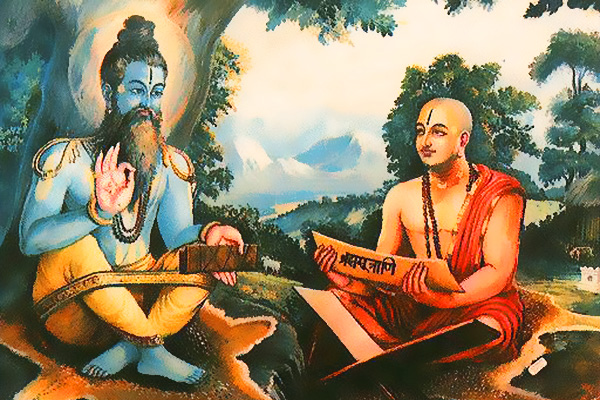
The Brahma Sutras are timeless texts written by Veda Vyasa Muni about Hindu philosophy, particularly Vedanta, which is promoted by Badarayana. Vaishnava Acharyas believe that Badarayana was actually Veda Vyasa himself, as his ashram was in Badari kshetram. However, some argue that the name Badarayana came from the Badara fruit (Ber or Indian Jujube) found on the island where Vyasa was born. Recent historians suggest that Vyasa and Badarayana were different individuals. Despite these debates, Veda Vyasa is celebrated for his role as the compiler, author, and organizer of ancient Hindu texts, significantly contributing to their philosophical, historical, legendary, and cultural aspects.
Auspicious Pujas to Be Performed on Guru Purnima
It is recommended to perform the puja mentioned below on Guru Purnima. Rudra Centre Puja Services is the world 1st & Oldest Online Puja Service Provider, we have a team of 250+ Karmakandi Pandits from Kashi curated by Sakhashree Neeta.
Guru Purnima Puja Vidhi & Yajna
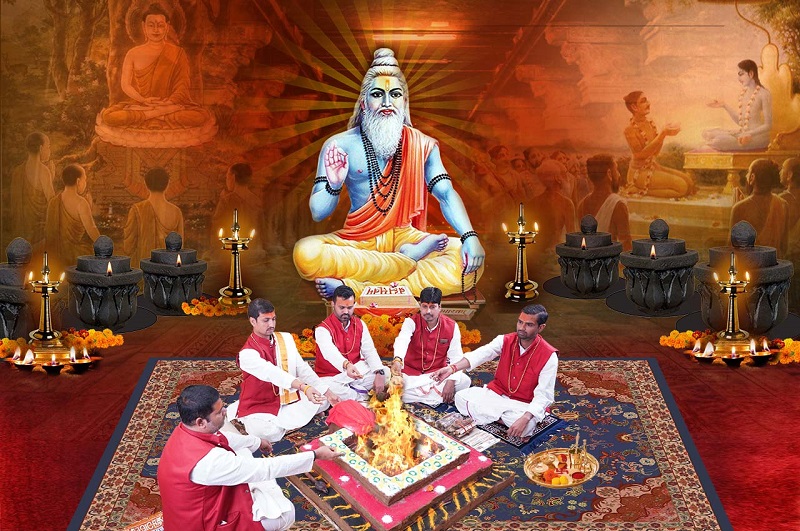
Book Guru Purnima Puja & Yagna Online
Guru Purnima is celebrated to mark the birthday anniversary of Vyasa Muni’s birthday. It is the day when people honour their spiritual masters, teachers, seniors and elders. The celebration venerates the Gurus or teachers. Guru Purnima Puja & Yajna on the occasion of Guru Purnima is performed to seek the divine blessings of gurus who remove the darkness of ignorance and light up the path of life.
Benefits of this puja
- Paying tributes to our beloved Guru.
- Success in education, career and marriage
- Blessings of Planet Jupiter and removing malefic effects of planet Jupiter. In Astrology, Jupiter is a planet of learning, morality, self-confidence, hope, honour, and the law. It is associated with optimism and growth (including mental and spiritual growth).
- Anyone facing Guru Dosha, which leads to problems like lack of prosperity, loss of confidence, expenses, fights, selfishness, educational barriers, and lack of harmony in and around the individual may perform this puja and get relief from its malefic effects
Guru Grah (Jupiter) Puja Mantra Japa & Yagna
_Puja_Mantra_Japa_&_Yagna.jpeg)
Book Jupiter Guru Grah Puja Mantra Japa & Yagna
Guru Graha (Planet Jupiter) performed on Guru Purnima is highly auspicious and rewarding. The planet Jupiter is associated with confidence and communication, knowledge, wisdom and learning. Individuals with strong Jupiter tend to be well-educated and well-to-do individuals. People with stronger Jupiter are generally thinkers, temple priests, teachers, scientists and judges having morality, self-confidence, honour, and the law. Jupiter is a planet of broader purpose, reach, and possibility.
Benefits of this puja
- Enhances confidence and communication
- Helps with maximum potential, better memory, power and to attain wisdom
Sage Ved Vyas Puja & Yajna
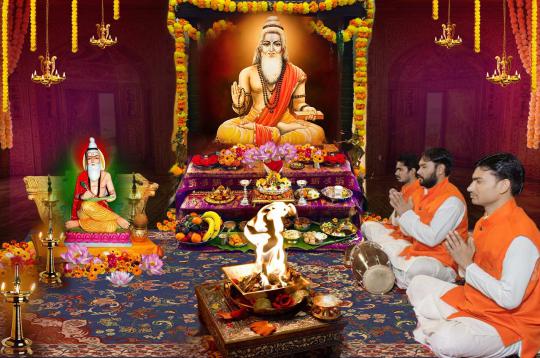
Book Sage Ved Vyas Puja & Yajna
Maharshi Vyasa Muni or Ved Vyasa is an empowered compiler of the four Vedas, the Puranas, the Mahabharata and the Bhagavad Purana (Srimad Bhagavatam). Born in the Dwapara Yuga to Rishi Parasara and Matsyagandhi, Vyas Muni is considered as the first and greatest acharya of Sanatan Dharma. Devotees of Ved Vyasa regard him as an incarnation of Lord Vishnu. Every year Guru Purnima is celebrated on the birthday of Maharshi Vyasa.
Benefits of this puja
- For divine grace and blessings of Lord Vishnu and Maharshi Vyasa
- For knowledge, wisdom, intellect and spiritual upliftment
Sage Kapila Samkhaya Pujan
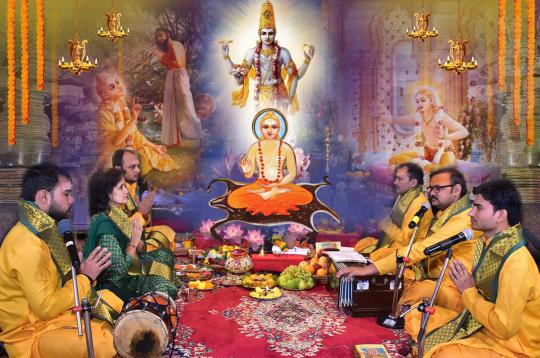
Book Sage Kapila Samkhaya Pujan
Maharishi Kapila is an incarnation of the Supreme Lord Vishnu , who restored the spiritual balance in the world through His teachings. Maharishi Kapila is the founder of the Samkhya school of philosophy, which is one of the six orthodox (astika) schools of Vedic philosophy. He also enlightened the world with Bhakti Yog, an art of liberation through devotion and love for the Divine. It is because of Maharishi Kapila, Goddess Ganga descended onto the earth. He turned the sixty thousand sons of King Sagar to ashes. When King Anshuman, the grandson of King Sagar, begged Maharishi Kapila to redeem the souls of those sons. He said that only if the Ganges descended from heaven and touched the ashes of those sons.
Benefits of this puja
- Divine grace and blessing of Lord Vishnu and Maharishi Kapila
- Knowledge, wisdom, intellect and spiritual upliftment
Significance Of Wearing Energized Spiritual Products On Guru Purnima
Wearing spiritual items such as Rudraksha beads and natural gemstones has always been central to the Vedic culture. All the spiritualists wore Rudraksha beads, and the kings wore gemstones as crowns, rings or bracelets. On this auspicious day, you may wear the following spiritual products that are made especially for Guru Purnima.
Yellow Sapphire
Yellow Sapphire (Pukhraj) brings the wisdom of prosperity, not only by attracting wealth and financial abundance into one's life, but in its ability to manifest one's creative energy into form through action. It Is ruled by the planet Jupiter (Guru), which is, astrologically, the most benefic planet of all. Once worn correctly on the body, it re-energizes the emotional system, encourages self-expression with more confidence and helps you eliminate the fear of the unknown and procrastination of important tasks. In the science of Chakras, it is said that Yellow Sapphire heals Vishuddha Chakra (Throat Chakra) located at the neck near the spine, enhancing your communication ability, decision making and self-expression.
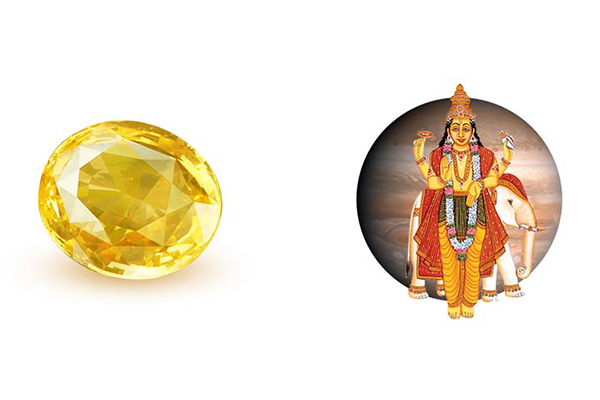
Click Here to Buy Yellow Sapphires
Wisdom Pendant
For enhancing communication skills, knowledge and self-confidence. Connects with Inner Guru Makes the wearer bold, expressive, communicative and intelligent. This is the most powerful combination of knowledge and communication. Wearer gets powerful and melodious speech, and he expands in awareness and understanding. Wearer releases their timid/shy/suppressed nature and enhances his own uniqueness, creativity and self-worth.

Click Here to Buy Wisdom Pendant
Therapeutic Properties
Provides relief from insomnia, neck/shoulder pains and sore throat.
Greatest Charity
Vedas always mention that the Brahmins and spiritual masters must be respected and given charity as a token of appreciation. This is the highest form of charity. On this day, you can also gift Rudraksha Kanthas of Gauri Shankar beads. A Gauri Shankar bead is the divine combination of Shiva and Shakti. Wearing this bead awakens the wearer's kundalini Shakti.


-in-Astrology.jpg)

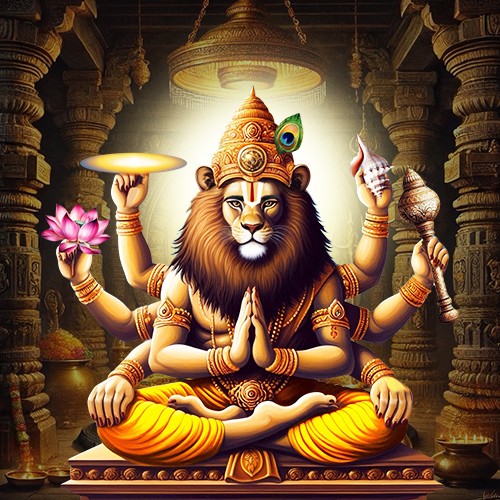
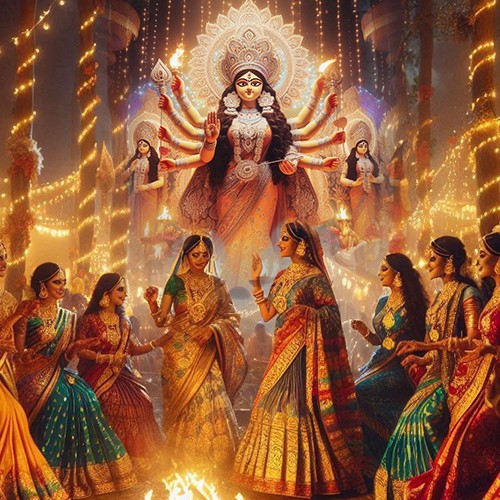
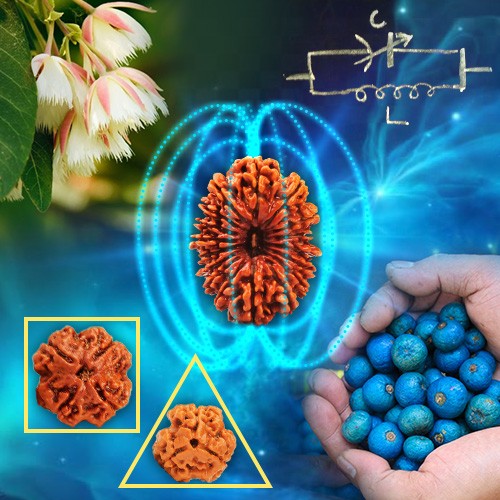

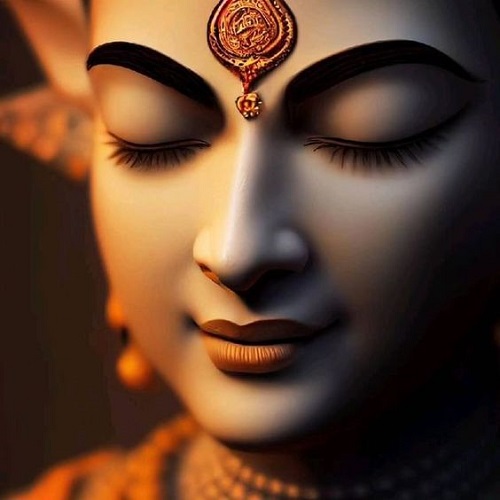
.jpg)
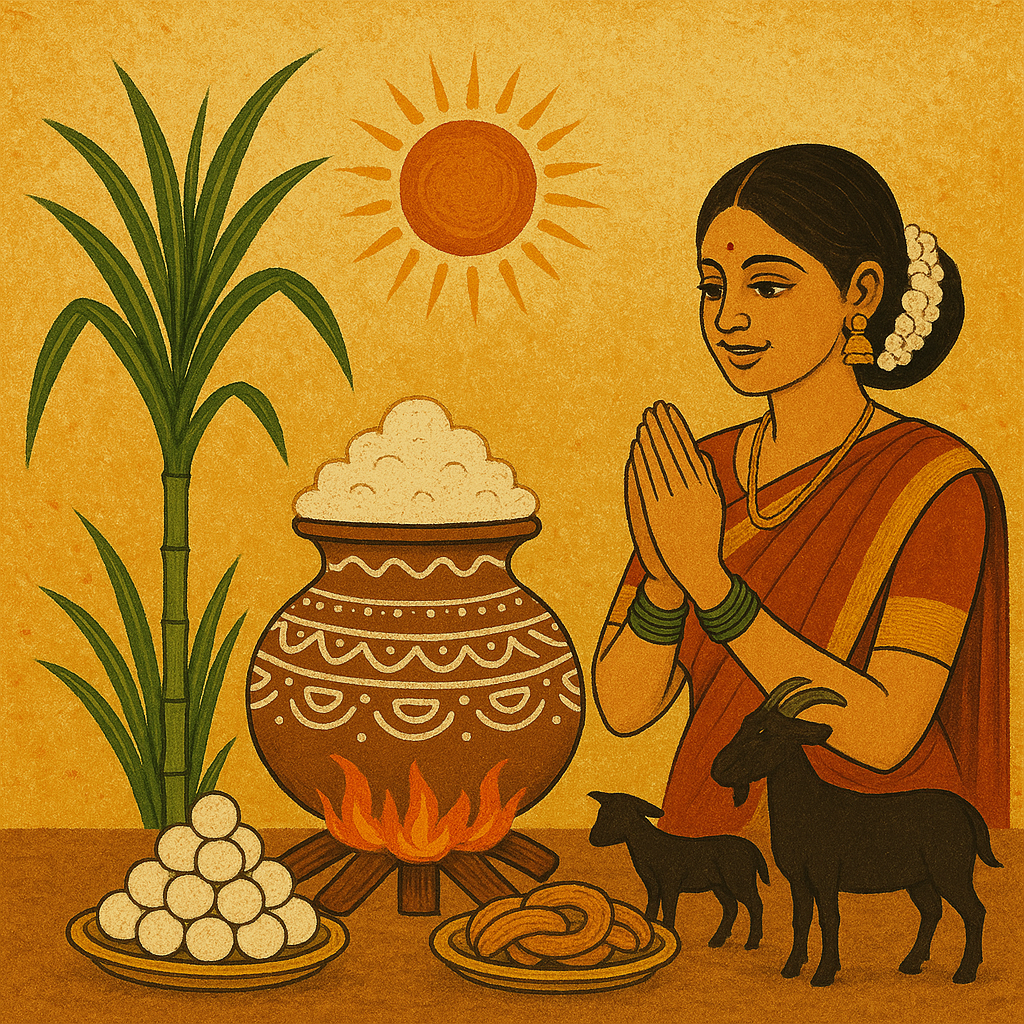

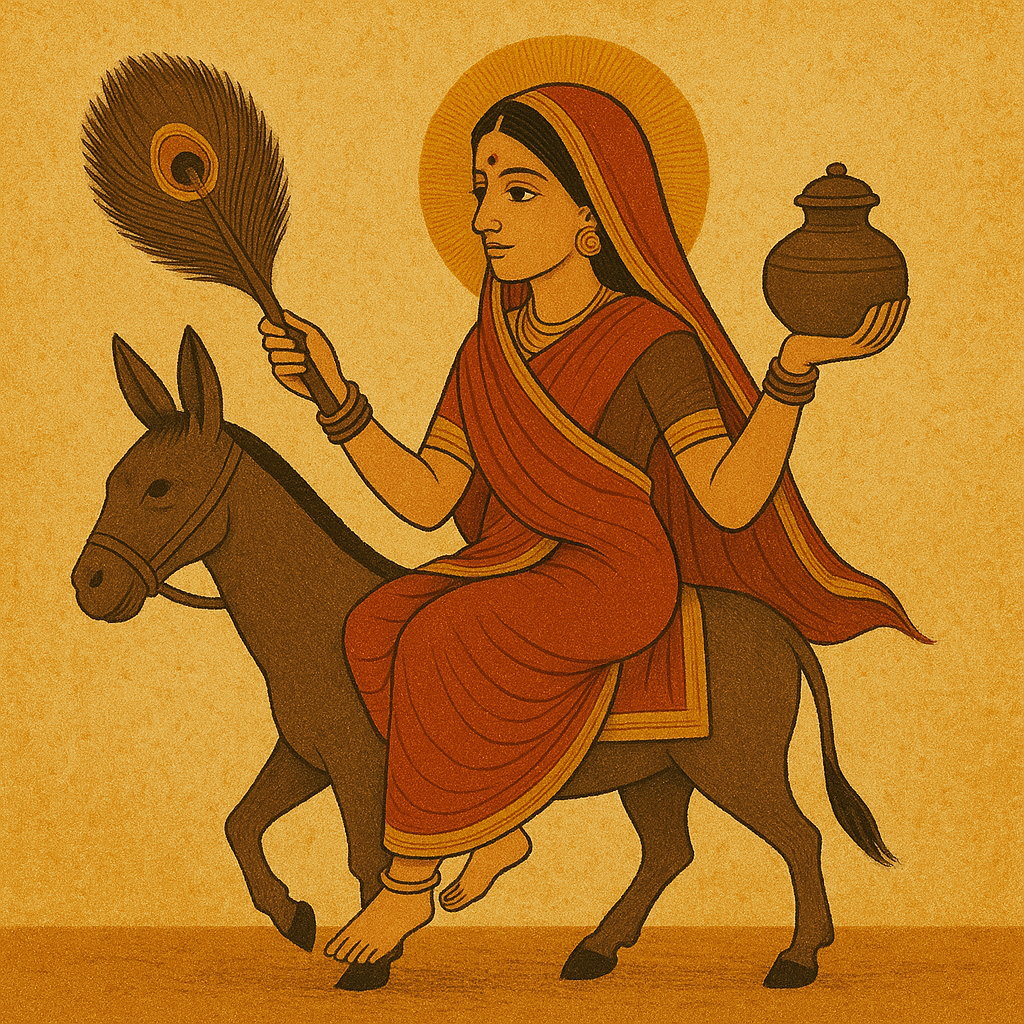
Sumathi
|July 21, 2024
It was very informative, thank you so much .